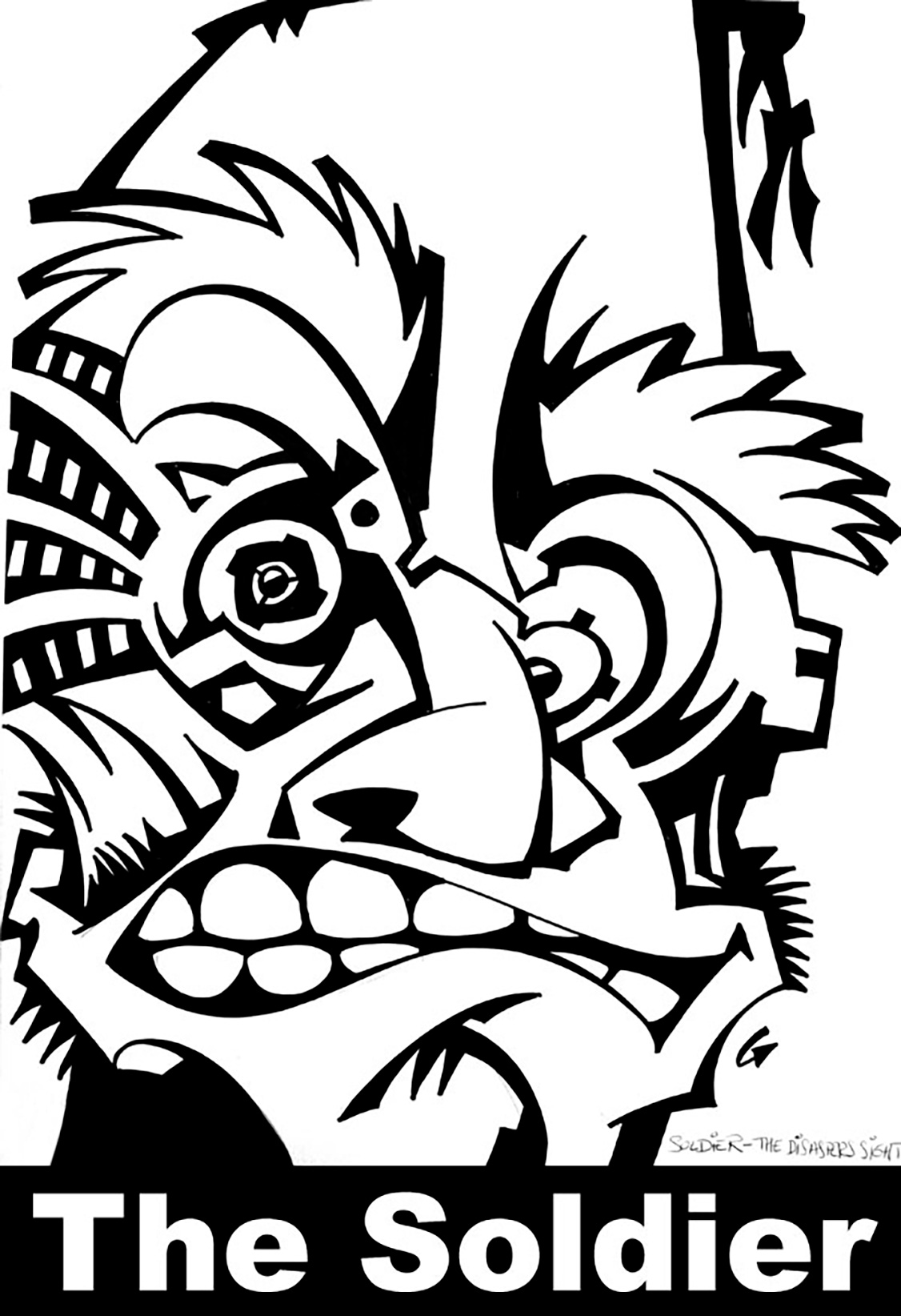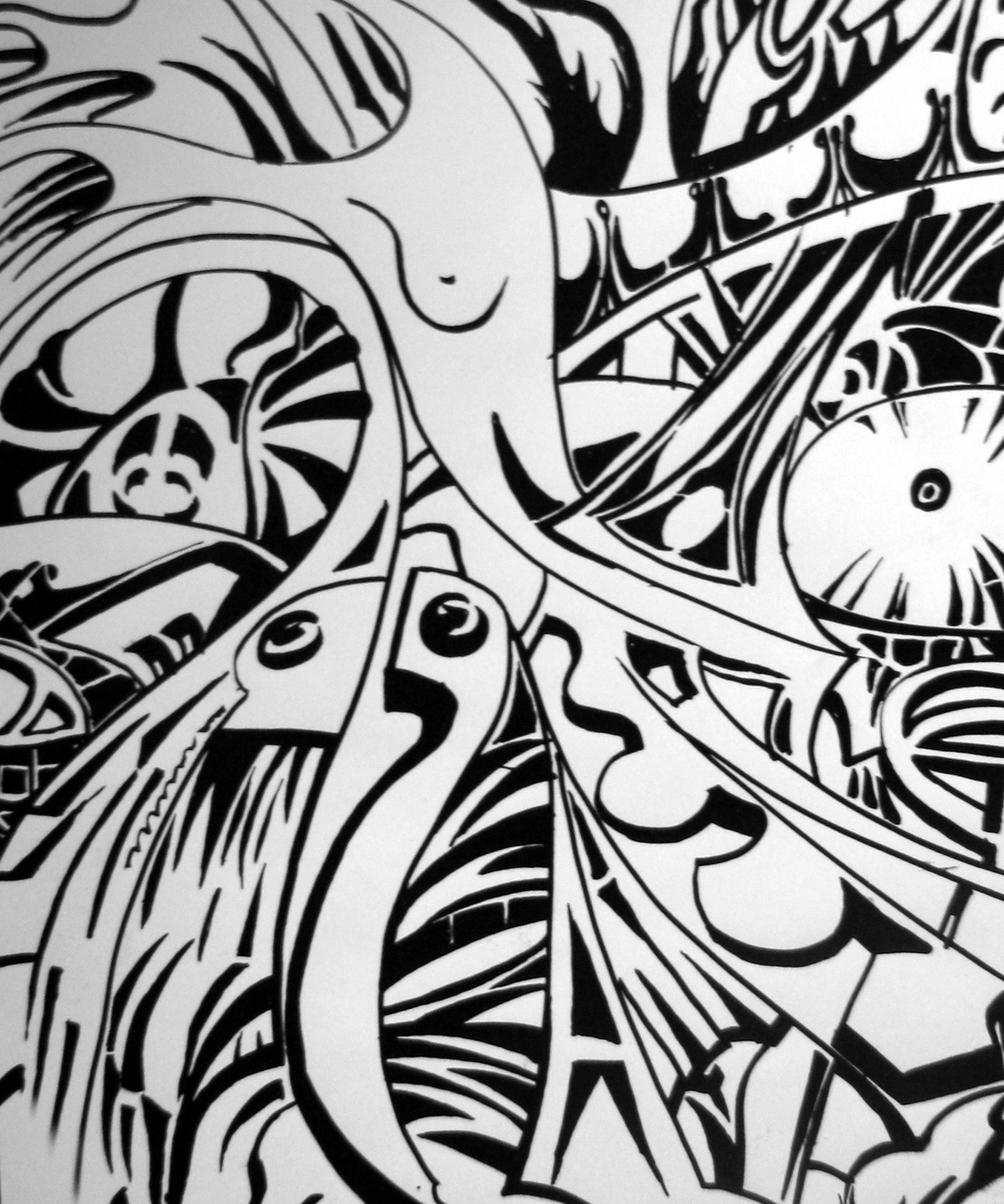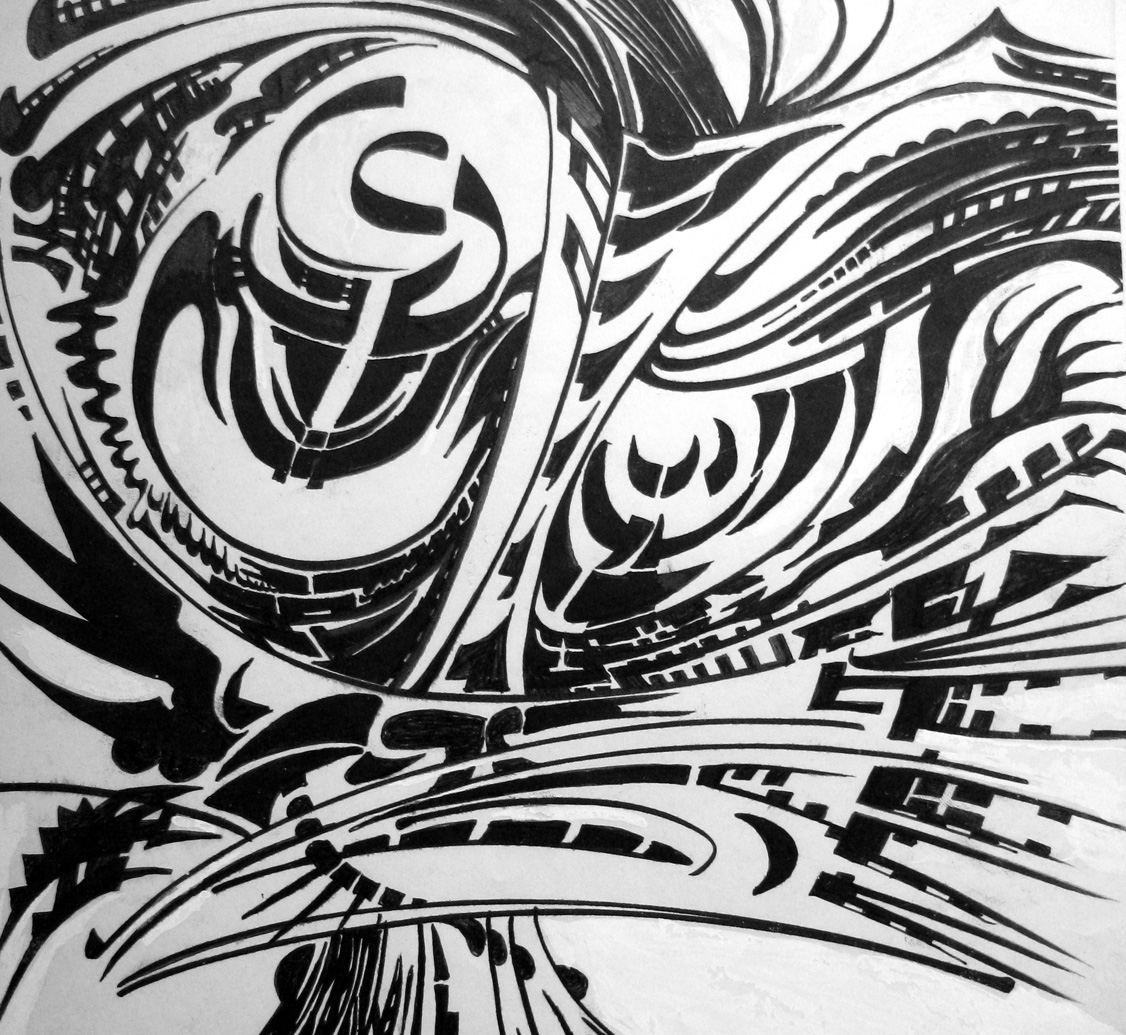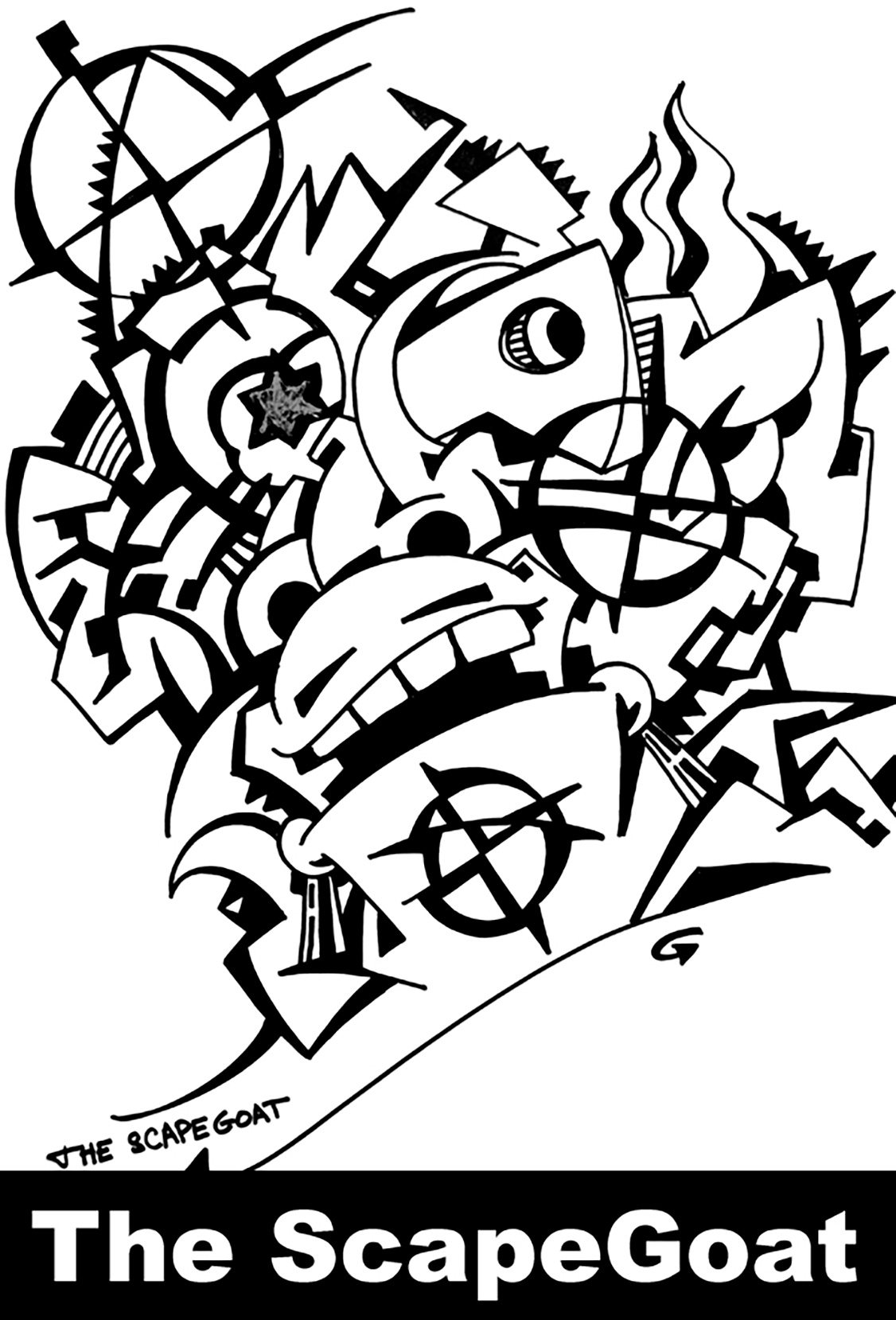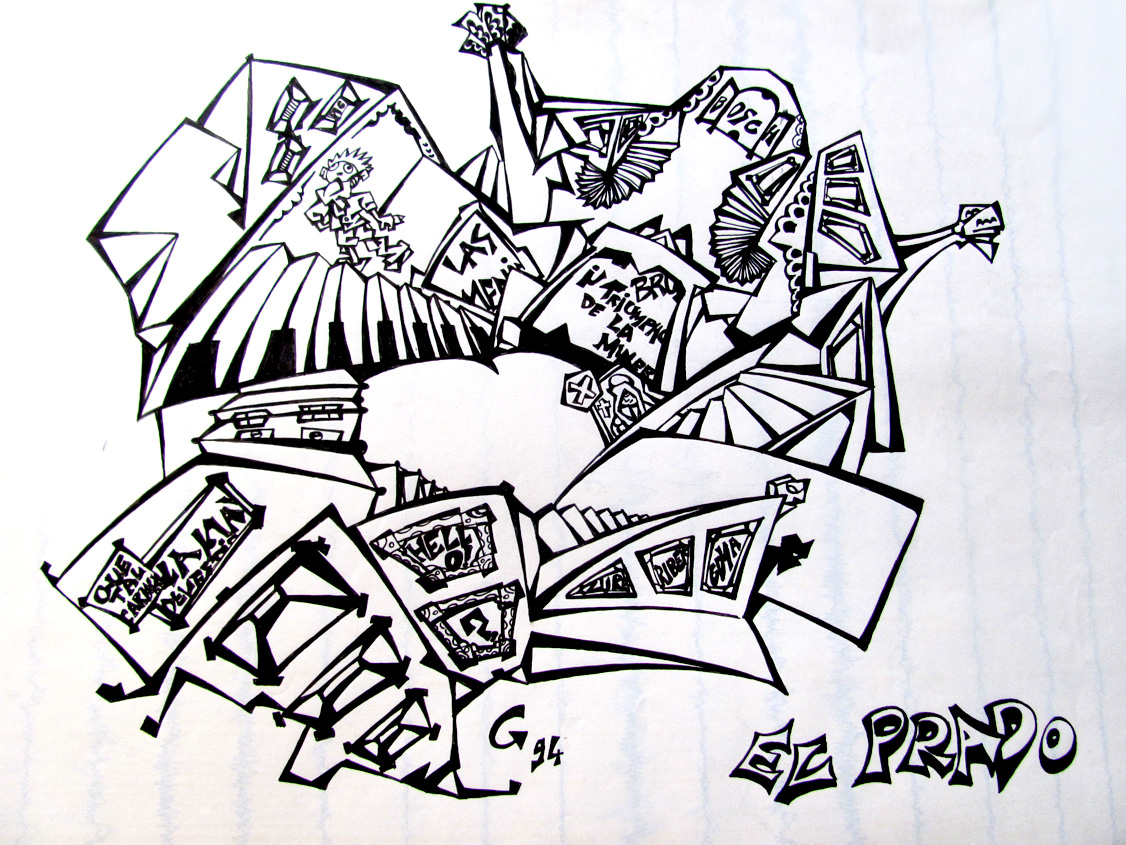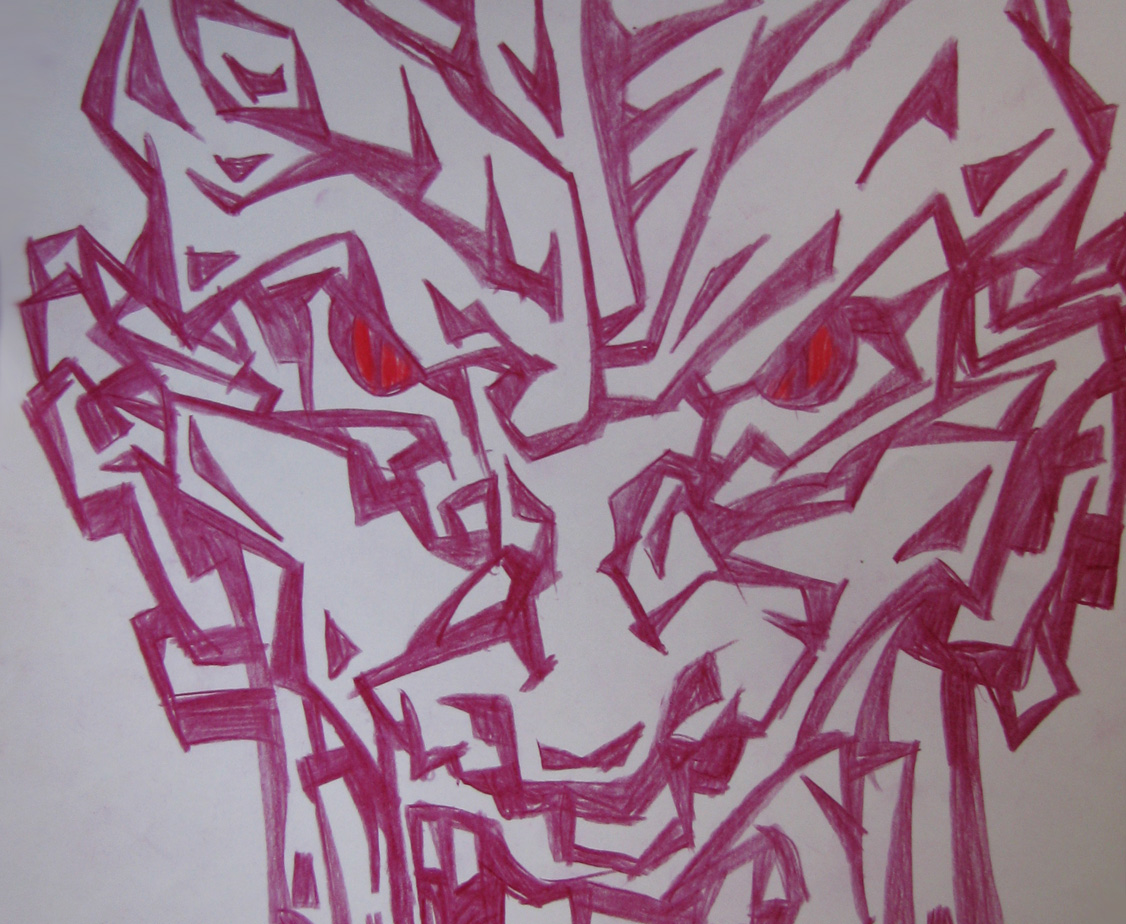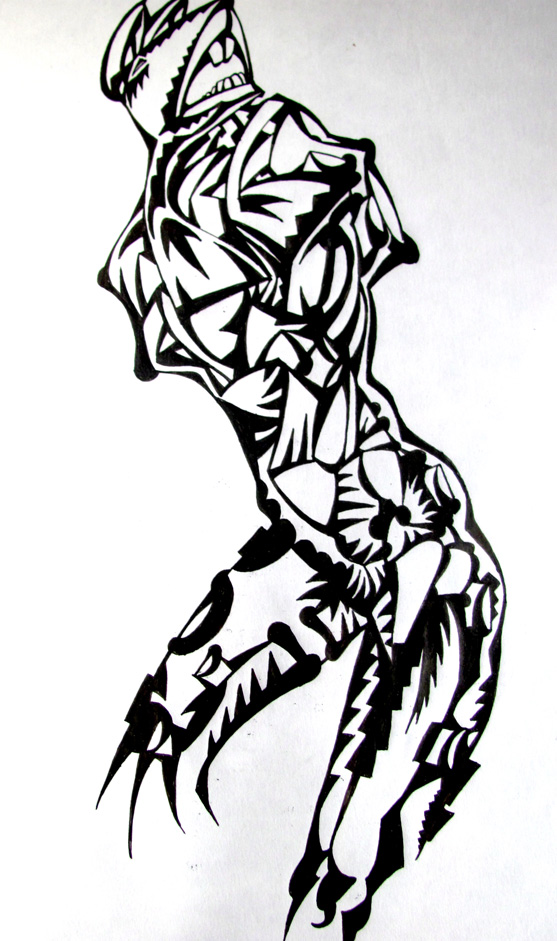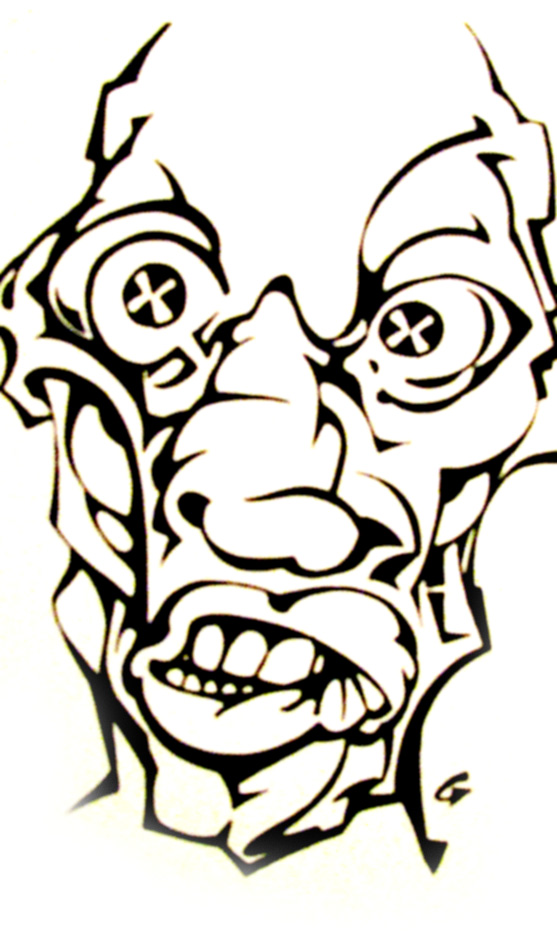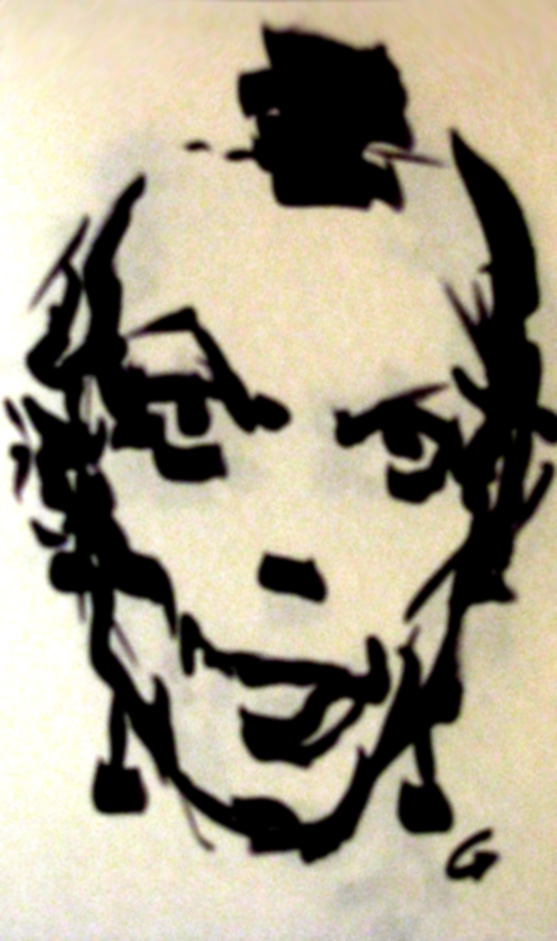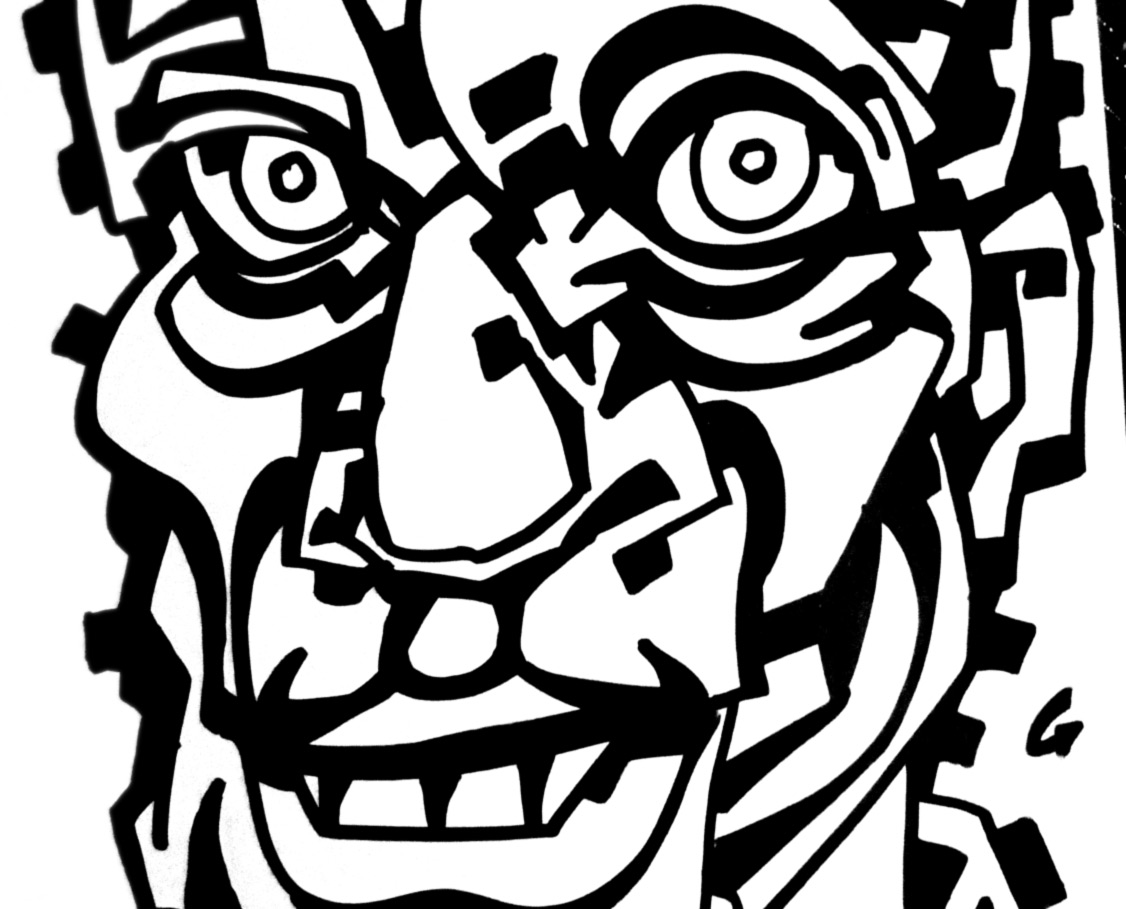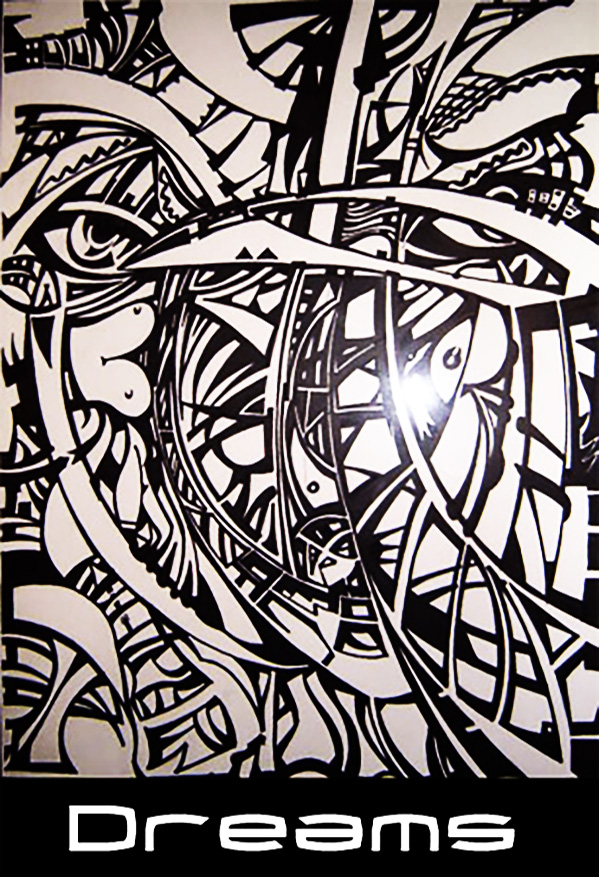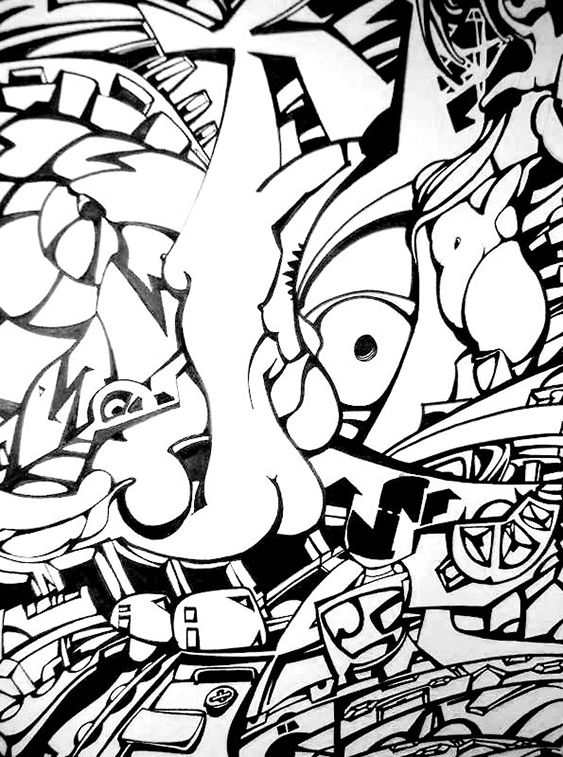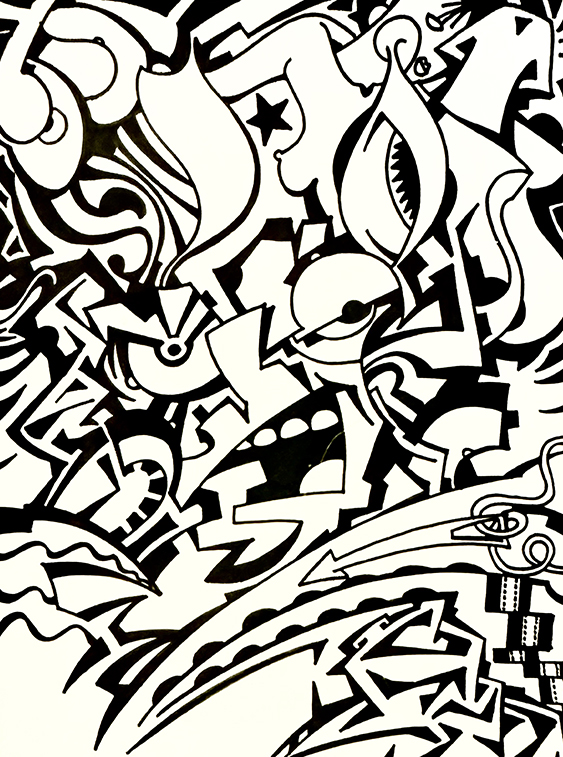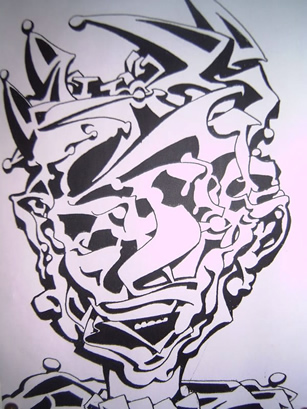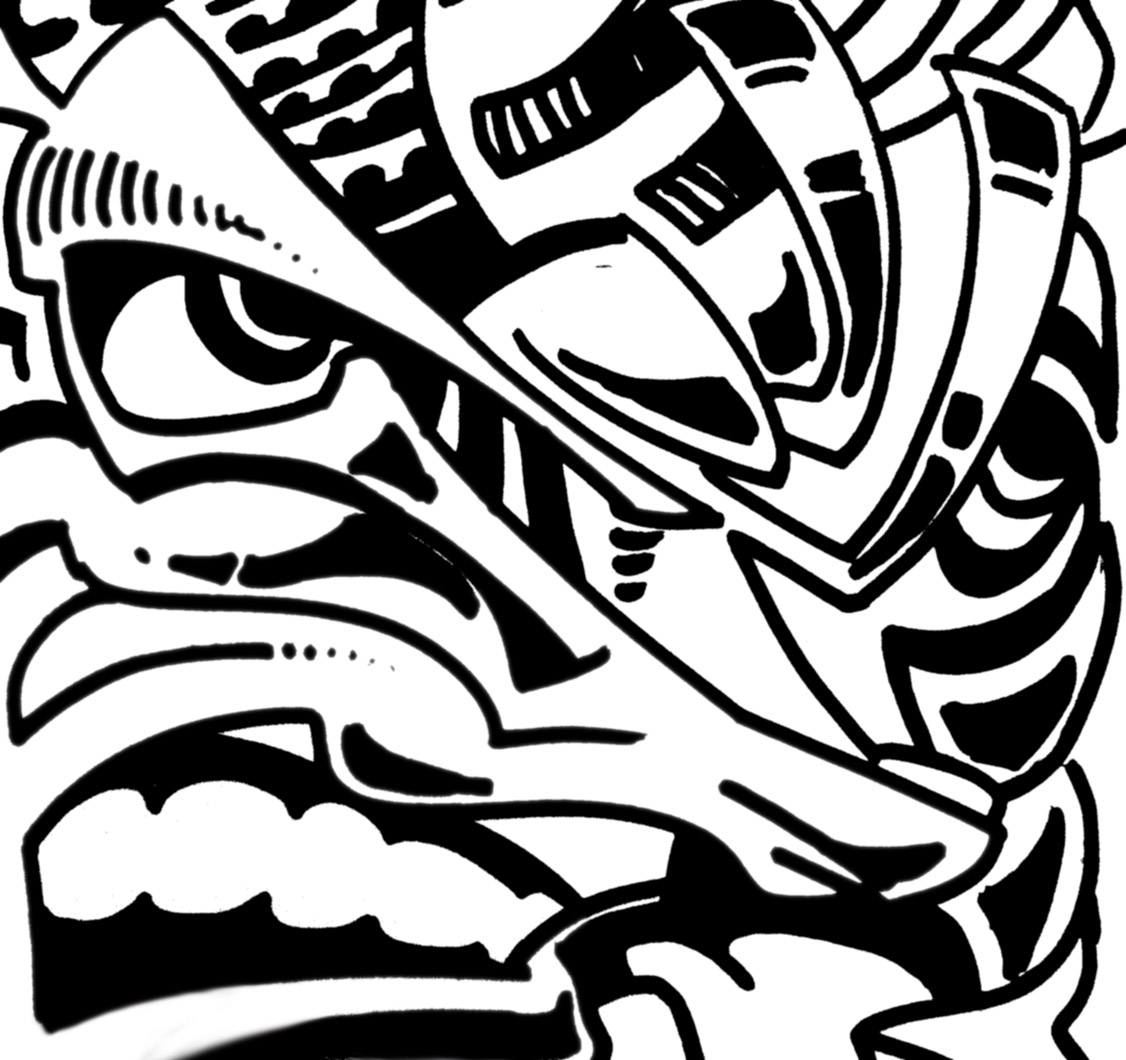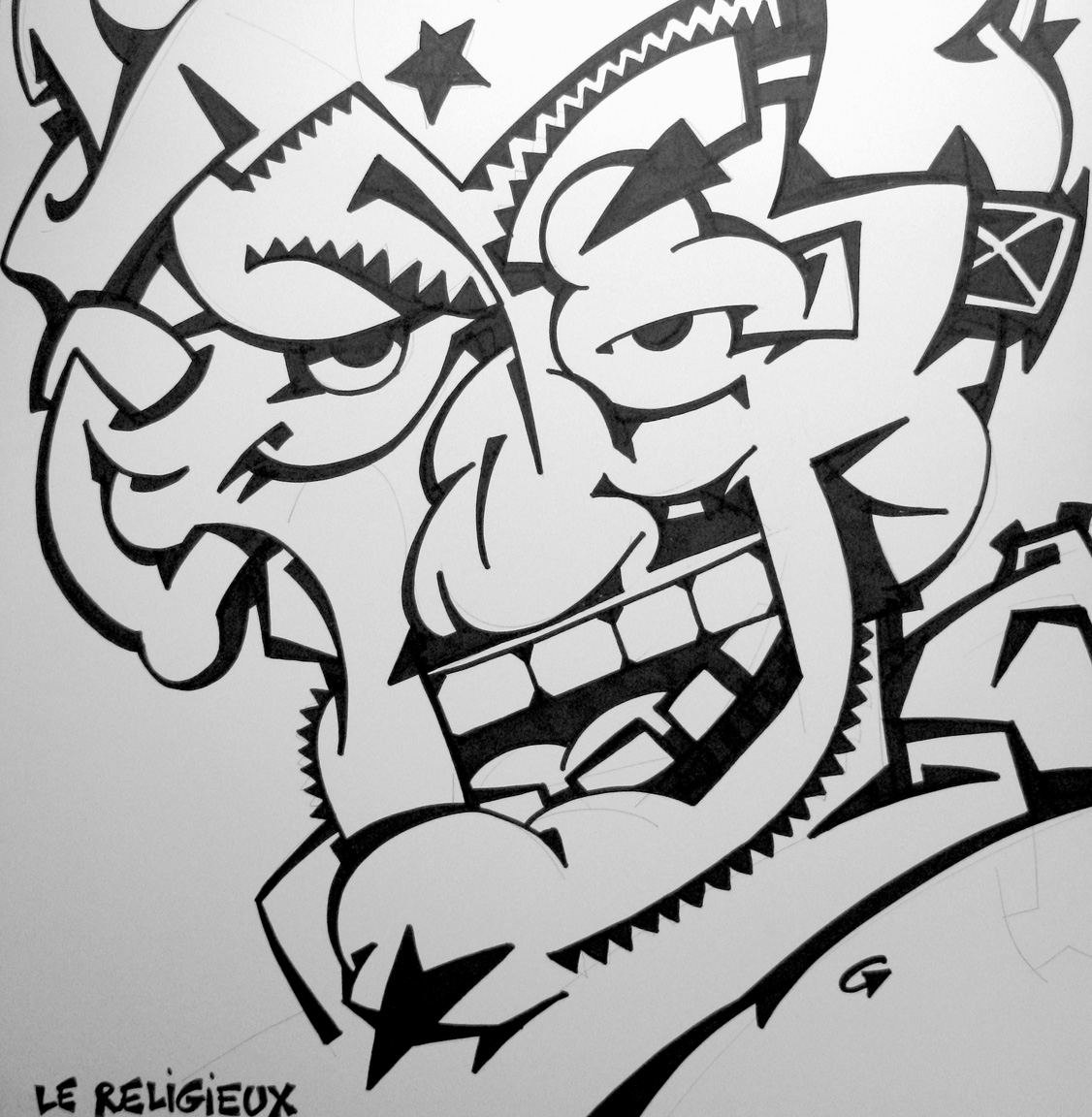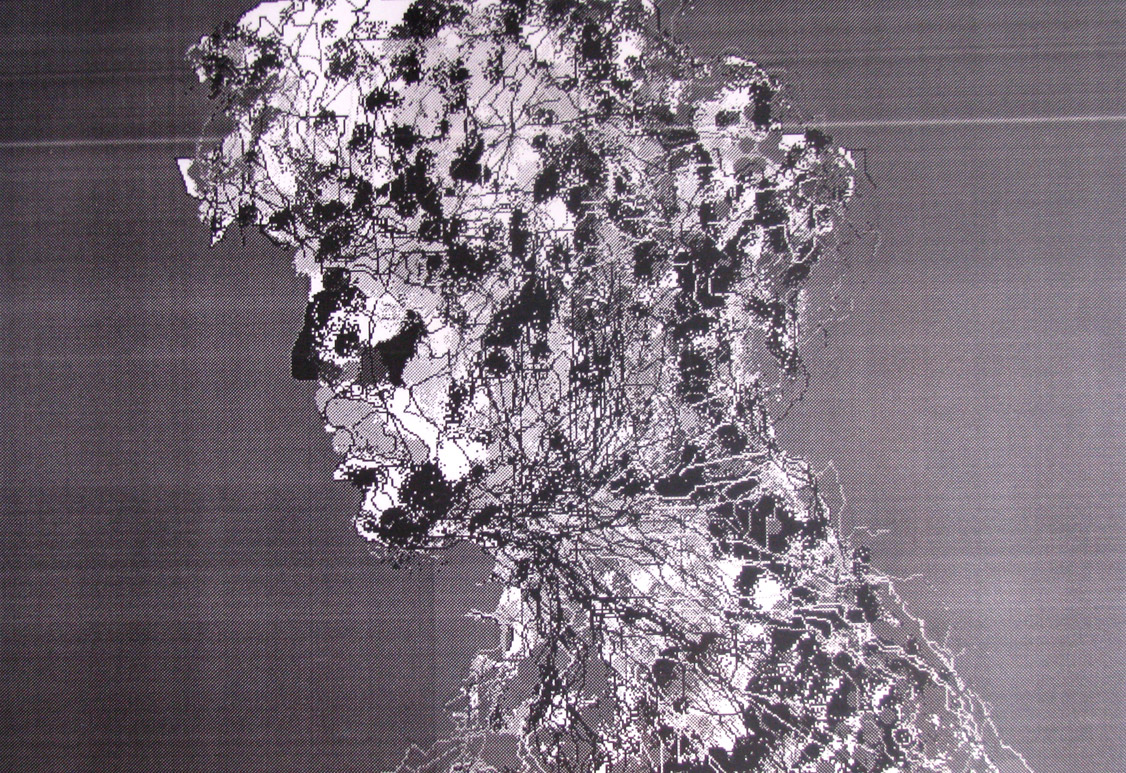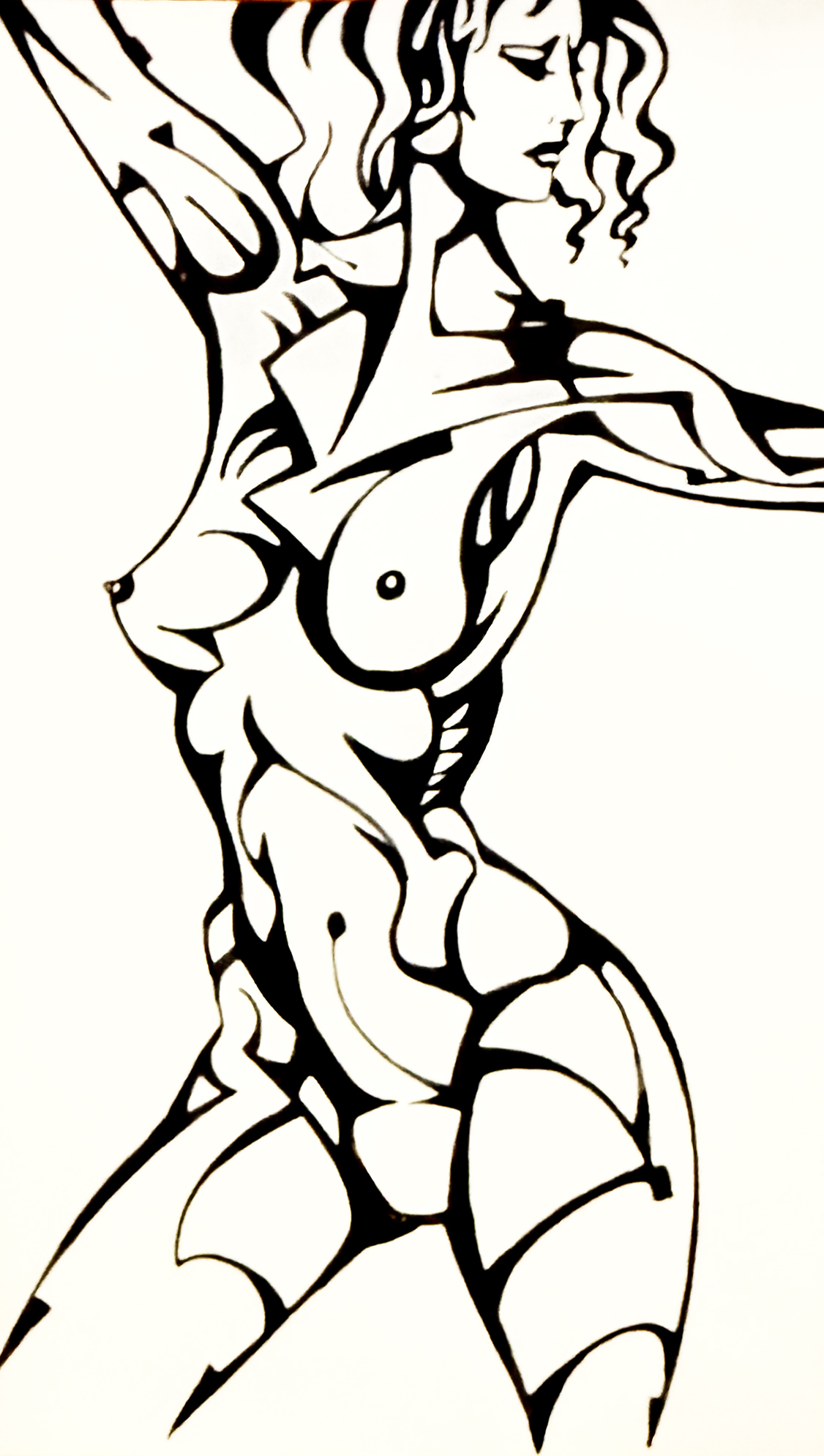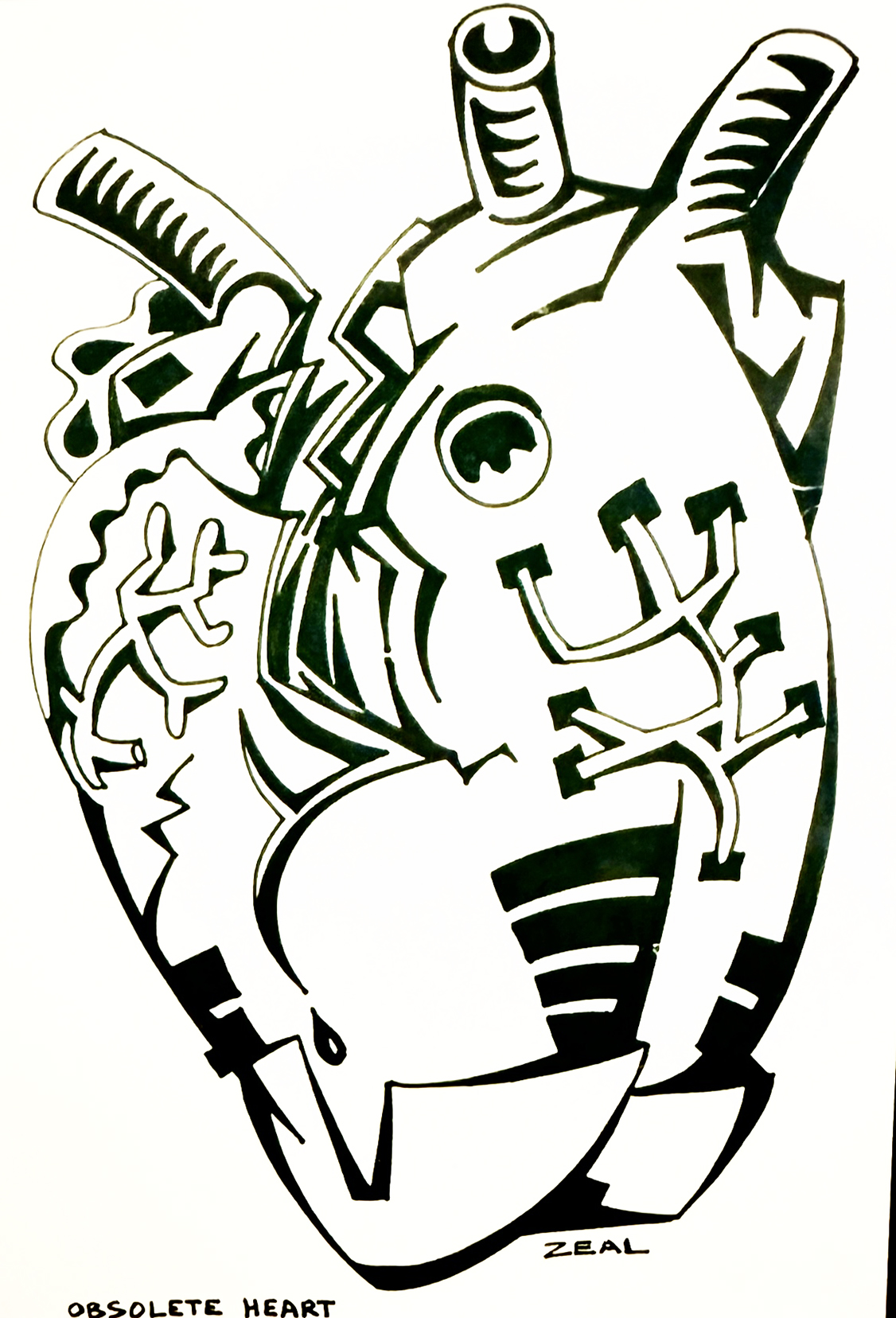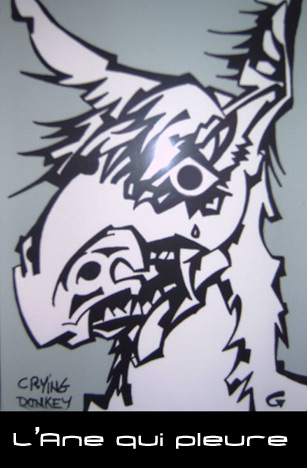|
The first large black and white drawings emerged in 1990 during a trip to France, while spending a night at the home of a friend who was both a painter and a remarkable individual: David Miège. I had a dream of a hieratic elephant divinity. Compelled to capture it, I drew it first thing in the morning, and it bore a striking resemblance to "The Dreams" drawing I created much later. This was followed by a series of large black and white depictions of women, "Les Femmes Voilées," which were exhibited in Paris in 1997.
"Le Fou du Roi" — The King's Fool — initially began as a sculpture in 1992. While working on animation, I had the opportunity to create substitutes using white plasticine. At the time, I was in Avon, Bristol, England.
I then replicated these sculptures, transforming them into black-and-white 3D sketches that evolved into either more complex or simpler forms, much like shapes crafted from plasticine. The drawings became volumetric sculptures. It's fascinating to create 3D volumes within a flat space, serving as a bridge to a more conceptual world where shapes morph into ideas.
This drawing was designed to encapsulate figurative art, cubism, expressionism, and impressionism, culminating in a new genre that could mark the beginning of something entirely fresh. Many artists, particularly painters, have grappled with the notion that everything had been attempted after groundbreaking statements by artists like Malevich, Mondrian, or Alberts.
The sentiment was that the history of art had reached its zenith, an insurmountable expression, and thus, the history of art was complete. It was presumed to be finished, with nothing new expected from the future or even the present.
"Nothing New in the Painting Department" is a defiant cry against this notion. Progress is a perilous idea; it can put you at risk. Restarting history under this assumption was a responsibility. Yet, it was a glorious privilege to confront this challenge and discover solutions and possibilities, not just for myself but perhaps for others as well. This meant relishing my newly found freedom and paying little heed to critics, which was both a curse and a blessing.
The experience of openness and continuous interaction in the creative process led to the convergence of other fields, such as theater, cinema, radio animation, and live painting.
|



